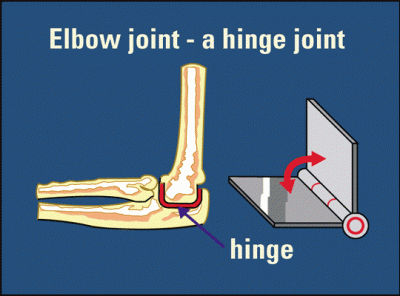
Deconstruction
Our entry into electracy (to the design of metaphysics for a digital apparatus) is through an updating of Justice. Our models so far are of the artists Jana Sterbak and Joseph Brodsky in Venice during the winter season of high water. We extrapolate to our own case, Ulmer in Gainesville, Florida, Holmevik in Clemson, South Carolina, you in your place. The instruction is theopraxesis. Martin Heidegger is a resource for learning how to undertake this correlation of philosophy with poetry and politics, in the transition from literacy to electracy. The challenge is to design a practice that is the digital equivalent of an alphabetic logic. The project is focused through proposing an alternative and supplement to Justice as concept. Heidegger undertakes a "destruction" (or deconstruction) of the tradition of Western philosophy, a return back to the beginning and inception of philosophy, to the Greek invention of literacy. The first instruction to note is: reoccupy tradition. His goal is to recover the original experience of Being at the origins of writing. His insight is that Plato in the Academy made a decision, picking up on one possibility modeled in the life of Socrates, relative to the affordances of alphabetic writing and the institutional requirements of school. There was, however, another possibility also available in pre-Socratic writing, another beginning, that was neglected and then forgotten. A new metaphysics takes this other beginning as its point of departure.
The original experience at the origins of Western literacy Heidegger recovered in the Greek word for "truth"--aletheia (provoked initially by its German translation)--noting "lethe," such that an (invented) etymology hears "unconcealment." "Truth" is a disclosive concealment: beings or ontic things appear here and now (space and time) in an opening cleared by a withdrawal of presencing, the happening of appearance (a double process). The original meaning of Being is rooted in Sanskrit asti: is, of itself, maintaining itself, an act in which a thing holds itself erect. It is as well a radiant thrust of life that the Greeks termed Phusis (Nature), that which emerges or arises, the act of coming forth into the light, as happens with seeds, eggs, a fetus. The invention of literate metaphysics is traced in a certain genealogy of terms, beginning with Phusis, noticed in a declarative--that it is, this!--recorded in the Pre-Socratic writings. The fateful decision, Heidegger explains, happened when Plato took the path into the concept by asking "this what?" crafting the Idea (from the word Eidos, shape). The showing of what is, is not so much a matter of the eye, vision or sight only, but of coming out of the dark and obscure into the light, a gleam of sun shining on a surface, the Gestalt of light and shade. Eidos or Idea happens in three ways: Phusis (standing in the light); Non-being, a mere aspect or accident of what appears; Glory, celebrity,, regard (esteem), appearing with respect to praise or blame in a community.
Heidegger's deconstruction returns to the academic concern with logos, to statements addressing Being as Idea in its visible aspect or properties, to point out that this analysis of what appears in being forgets about the opening or unconcealment, the Being itself of beings. The academic tradition unfolded with the invention of several more terms to name the inventions of literacy, taken up in Aristotle's categories (as noted previously). From Nature and Idea followed Form (Morphe, arranging the parts of matter), Entelechy (Being immanent in matter, such that a thing becomes what it already is through growth); Substance (the primary category establishing the unity of a thing); Soul (Psyche, the dynamic causal principle of life); First Cause (the Prime Mover, God, intelligence at work). These terms set Western metaphysics on its way, by means of a particular manner of gathering (logos), bringing order out of chaos by means of conceptual logic. Heidegger's project of deconstruction of this tradition is to return to the very beginnings of the evolution, to the first experience of Being as Phusis, the registration of life emerging into appearance, the clearing or opening that shows, and to find another path from this opening, other than the way of Idea and concept taken in alphabetic writing invented in the Academy. This way is modeled in poetry, and Heidegger devoted much of his later career to extracting from the art of a few exemplary poets (as well as from other arts such as painting and architecture) a new practice of thinking that is a relay for our design of electracy. We are following Heidegger's lead, proposing to learn from Brodsky in Venice an electrate (post-conceptual) manner of gathering into order.
Share this
Comments

Jointure (Justice)

Heidegger's method is to return to the writings of the Pre-Socratics, as providing the best clue to the original experience of Being at the beginnings of literacy. The case most immediately relevant for us is Heidegger's translation and commentary on the one surviving fragment by Anaximander. This discussion defines precisely the fundamental turn and return guiding our design of electrate Justice. The standard translation of the fragment is: "...according to necessity; for they pay one another recompense and penalty for their injustice" (Heidegger, Early Greek Thinking, 40). Heidegger offers his own translation, based on a careful assessment of each word, in order to bring out the possibilities of the other beginning: "...along the lines of usage; for they let order and thereby also reck belong to one another (in the surmounting) of disorder" (57).
Heidegger's other beginning focuses on the experience of Phusis as an emergence from the hidden (unconcealment), shifting away from Plato's Techne and Logos (craft and plan). Heidegger poses a different question that does not depend on building or looking, but rather what concerns limit, and here is the opening towards another metaphysics. Entelechy was the term Aristotle invented to name the immanent relationship of form and matter, of actuality (energeia) developing out of potentiality (dunamis). Aristotle interpreted Plato's question about the relationship between Being and Becoming (of permanence and change) in terms of biological development: an acorn becomes what it is over time (an oak). There is an internal limit; an entity holds itself in its ending. This end (purpose, final cause) is present in its idea, in what it looks like (it has a face). Substance is what is available for view or action in an object (the categories). Heidegger's focus is rather on the original power of emergence, the force of Being that is not a thing but a work of relationality. The issue is not correctness (true or false), but apprehension or experience of being. Neither is the emphasis on the permanent or eternal, nor that which persists through all change, but rather precisely on the transcience of matter, the arriving and departing. Heidegger learned from Aristotle himself that there is more than one way to say Being, and poetry offers another kind of relation, another way to understand ordering, of how parts gather and separate, converge and disperse, come into appearance and disappear again. His test case is not biological growth but the art of tragedy, and the limit that it dramatizes, specifically the strangeness of human encounter with the Overpowering (called Deinon), the fundamental limit of finitude, mortality, disaster, death. Human beings are uncanny, inherently exiled from hearth and home, as we learn from the destiny of Antigone.
Heidegger's method adheres to literate metaphysics in recognizing that ontology--the science of being--is a capability of alphabetic writing. His turn to poetry as the model of inquiry liberates him from the jurisprudence of category, to exploit polysemy rather than definition as a resource for thinking. He examines the term Deinon (Overpowering) and finds two senses with respect to confrontation. One involves Techne as a violence of laying down a way or path, and that is the way taken by literacy. The second sense is the source of Heidegger's innovation, establishing the basis for creating a new Justice. This other power is revealed in the German term Fug: der Fug (what is fitting, just, right); die Fuge (joint, seam, gap, space, suture); fugen (to join, fit together). One says, Die Zeit ist aus den fugen (the times are out of joint). Figurative usage of the verb fügen gives "fitting arrangement" explicitly concerning justice. There is even the homonym "fugue," referring to the musical form. Heidegger developed this semantic field relative to "injustice" and "necessity" in Anaximander's fragment. Heidegger unpacks Fug relative to Justice (Dike) as jointing, jointure, a framework (set-up) determining what is fitting, thus merging the two senses (Techne, Dike): confronting the Overpowering men search for order (Fug) yet cannot master it. The Overpowering requires a place, a scene of disclosure. This scene of joining and breaking is humanity itself: Dasein (there-being). Man is a breach into which and through which being bursts forth to appear as event (not thing). This account approaches well-being from its other side, disaster, catastrophe.
The risk Heidegger takes in generating this reading of the fragment enables a leap out of literacy into electracy, for in searching for le mot juste for the truth of Being he names exactly the problematic of the new apparatus. His strategy is to rethink the sense of category as "indictment" (the handing down--or up--of accusation), to hear this handing over and exchange as the coming into presence of Being as a certain enjoining, and finally, enjoyment. "Necessity" becomes "Usage" (der Brauch). "Justice" in this reading enjoins each epoch to bring about what is fitting, appropriate, in the manner in which what is given belongs together.
"Usage" should not be understood in these current derived senses. We should rather keep to the root-meaning: to use is to brook [bruchen], in Latin frui, in German fruchten, Frucht. We translate this freely as "to enjoy," which originally means to be pleased with something and so to have it in use. Only in its derived senses does "enjoy" mean simply to consume or gobble up. . . . "To use" accordingly suggests: to let something present come to presence as such; frui, to brook, to use, usage, means to hand something over to its own essence and to keep it in hand, preserving it as something present. . . . "To brook," frui, is no longer merely predicated of enjoyment as a form of human behavior; nor is it said in relation to any being whatsoever, even the highest (fruitio Dei as the beatitudo hominis); rather, usage now designates the manner in which Being itself presences as the relation to what is present, approaching and becoming involved with what is present as present (53).
Enjoyment is to electracy what Truth is to literacy, but the manner of enjoyment turns out to be as troubled as were the primary purposes of the previous apparati.
